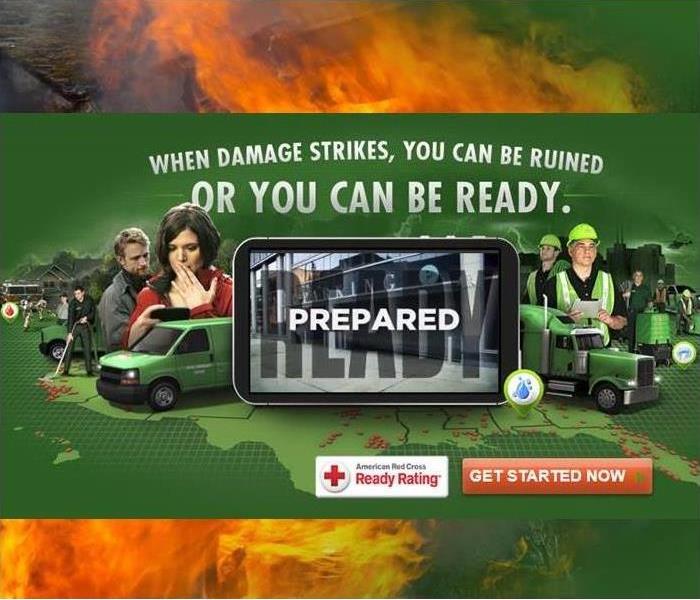Disaster and Recovery: Are you prepared?
6/3/2019 (Permalink)
A disaster is defined as any event which disables, interrupts, or adversely affects the ability to operate a business in a normal manner. The National Archives and Records Administration estimates that only 43 percent of businesses that suffer an incapacitating disaster are able to recover and resume operation. Of that 43 percent, only 29 percent are still in business two years later. Developing a solid working contingency plan is essential in the recovery efforts of your clients.
There are two major categories of disasters: internal (or man-made) disasters and natural disasters. Internal disasters include events such as fires, water damage from plumbing failure, major computer failure destroying data, phone system failure, and major electrical outages. Natural disasters include flooding rom streams and rivers, hurricane, ice storms, tornadoes, earthquakes, mudslides, and windstorms.
Experts estimate that only 5 percent of disasters affecting business caused by nature.
Consider a hazardous material incident in a factory close to your facility where a toxic gas is released requiring mandatory evacuation of everyone within a five-mile radius for weeks. What about a train derailment with explosives, fuel, or some kid of dangerous chemical? Civil unrest resulting in rioting and looting, or even terrorism as we are all too familiar with now, could interrupt your client’s operation just as easily as a natural disaster. Would you know how to react?
Be Prepared!
Before developing a contingency or preparedness plan, take some time with your client for self-examination. What can be done to prevent or at least mitigate the effects of a catastrophic loss to their business? There have been many losses that could have been prevented, or at least the severity of damages reduced, with proper planning. Consider where archived documents and data are being stored--hopefully not in an abandoned room in the basement. The key to recovery is preparedness. If you know the situation—who the players are and what the responsibilities are for each member of a response team—your clients will be able to better handle business resumption. The pre-planning phase is a must for disaster situations. This if the main ingredient for any resumption plan and must be tested for many situations to make sure a business has considered every conceivable disaster that could impact its operation. Identifying and eliminating hazards and risks is the best way to help in the prevention of a disaster. It is much easier to prevent the disaster than to recover after one has struck. Your clients should call the fire department and have an inspector examine their facility, especially if they are renting. Fire inspectors can help identify risks and make suggestions on how to correct potential problems. OSHA also offers a free consultation program and will inspect facilities for hazards and risks. OSHA and fire inspectors will help businesses select preventative measures. Another risk to consider includes the area where your client’s operation is located. Are there businesses that utilize hazardous elements in their production? Are your clients located near major railways or freeways? Some of the most innocent looking buildings could possibly be the most dangerous.
The geographical area a business is located in dictates, to some degree, the type of natural disaster which may strike. Knowing the type of natural disaster most likely to occur in your client’s area can help in planning and risk management.
Recovery Planning!
For business owners, developing mutual agreements with a multitude of vendors is essential as a routine part of a recovery plan. Creating relationships with different vendors before a loss occurs gives your client the ability to make arrangements and help them become familiar with each other’s services and situations before a disaster takes place. Mutual agreements become even more important for your client to be able to obtain services when everyone else needs emergency contractors, which is the case in regional disaster situation. Agreements with emergency service contractors should stipulate that your client has priority for services in restoring their facility and servicing their customers.
We understand how important it is to resumes business operations as quickly as possible following a catastrophic event. SERVPRO of South Orange County can provide services on a 24-hour basis. We work hand in hand with contingency planners, risk managers and insurance representatives to supply emergency response personnel in any situation, whether your client’s loss is large or small.

 24/7 Emergency Service
24/7 Emergency Service
